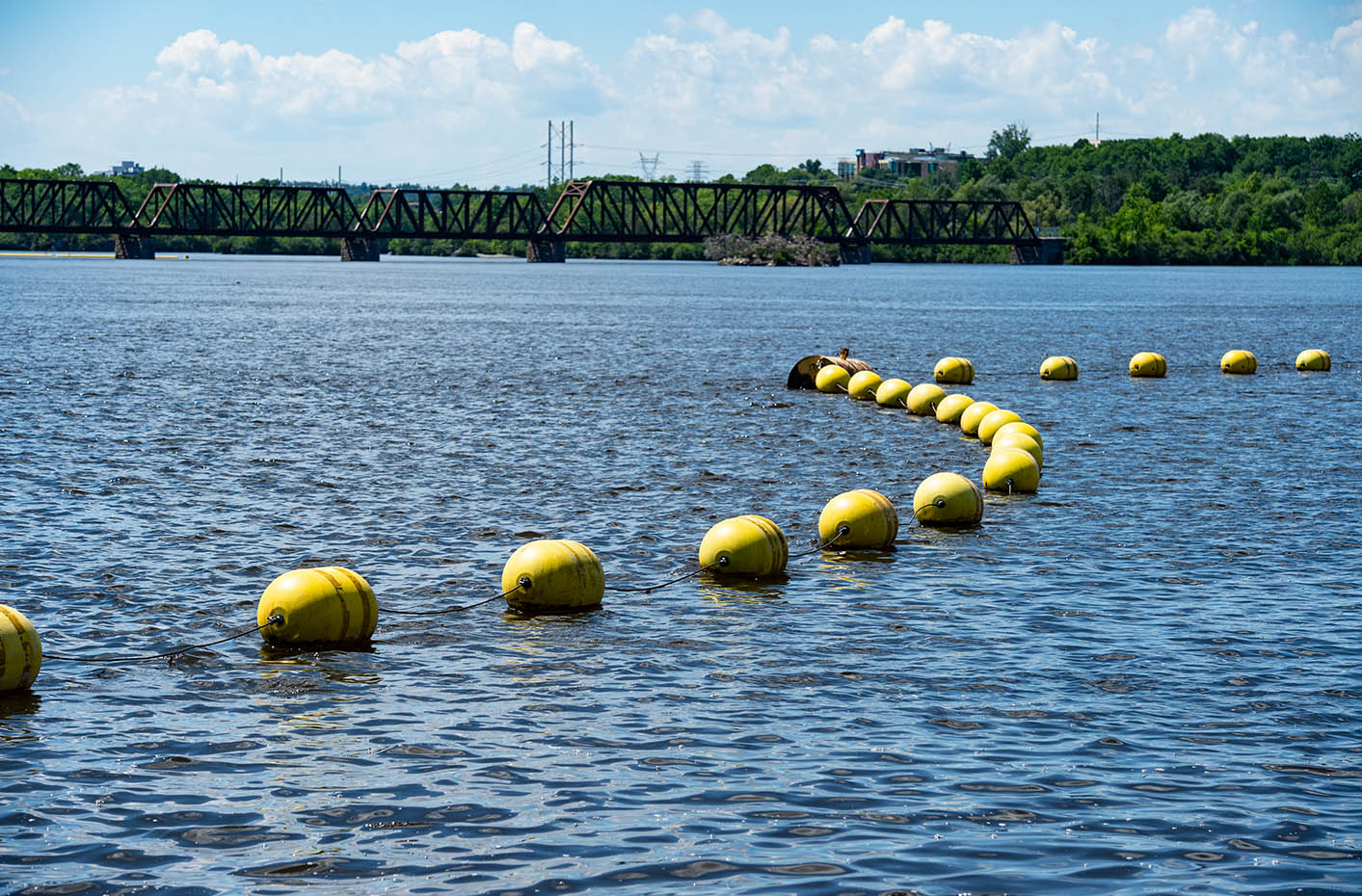

Safety around dams and
Portage Power owns and operates six run-of-the-river hydroelectric generating facilities at Chaudière Falls near Ottawa’s core, along with the historic Ottawa River Ring Dam, and 10 other run-of-the-river facilities in Ontario and the State of New York.
Our hydroelectric facilities offer clean, renewable and affordable energy for our customers, as well as provide space for a variety of public recreation opportunities nearby. But while some rivers, reservoirs and recreation areas can be popular places to visit and enjoy the outdoors, where there is water, there is also an inherent risk of hazards, including the risk of drowning.
That’s why it’s important to respect all warning signs and fenced, marked and gated areas – including those around hydroelectric facilities such as dams, generating stations, spillsways and weirs. Regardless of their shape or size, those facilities can present hazards to those who work or play near them.
With safety as our top priority, below are some tips to help keep you safe year round.
Tips on how to stay safe
- Always stay a safe distance away from dams both upstream and downstream to avoid drowning.
- Obey all warning signs, fences, buoys, booms and barriers. They are put there to ensure your safety. The areas are considered hazardous, and you should stay back at all times.
- Keep away from the river’s edge; surfaces can be slippery and cause you to fall in the water.
- Avoid standing or anchoring your boat below a dam. Rapidly changing water levels and flows near hydro generating stations and dams can create significant hazards, and you could end up with your boat swamped, or caught in an undertow. Always ensure you obey all regulations set by the Canadian Coast Guard.
- Don’t swim in any rapidly moving water.
- Never sunbathe, picnic or camp in an area which may become flooded due to dam operations.
- Always supervise children and help them to learn how to stay safe.
Changing water conditions
When recreating by a river, be aware of your surroundings. Water levels can rise or fall quickly without warning as we use the flow of water to generate electricity through our operations.
Always look at the forecast before you head out by the water, and watch for changes in the weather that could impact water conditions.
If you see a change, get out of the water, or distance yourself from the unsafe area.
Winter safety
In winter, keep off the ice near hydroelectric facilities. Rapid temperature changes can cause ice to melt or break, and become weak around our dams and hydro generating stations because of changing water levels and strong currents.
Avoid activities like snowmobiling, skating, cross-country skiing, ice fishing and walking on ice whether on foot or snowshoes. Always remember the potential for slush under the snow, and beware of thin ice that may results from changing water conditions.












